Hotpoint Ariston TVM 70C 6P/Z, TVM 70C 6P, TVM 70C P Manual [fa]

Instruction booklet
|
|
|
|
|
|
|
|
TUMBLE DRYER |
|
|
|
|
|
|
|
|
|
|
|
|
|
|
|
|
|
|
Contents |
|
|
|
GB |
|
F |
|
E |
|
|
GB |
|
|
|
|
|
|
|
||||
|
|
|
|
|
|
|
Important information, 2 |
|
|
|
English, 1 |
Français, 13 |
Español, 25 |
|
|
||||
|
|
|
|
|
|
|
Product data, 2 |
|
|
|
P |
|
A |
|
FA |
|
Installation, 3-4 |
|
|
|
|
|
|
|
|
|
|
|
|
|
|
|
|
|
|
|
Where to put your dryer |
|
|
|
Português, 37 |
Arabic, 60 |
Farsi, 72 |
|
|
||||
|
Ventilation |
|
|
||||||
|
|
|
|
|
|
|
|
|
|
|
|
|
|
|
|
|
Electrical connection |
|
|
|
|
|
|
|
|
|
Levelling your dryer |
|
|
|
|
|
|
|
|
|
Before you start using your dryer |
|
|
|
|
|
|
|
|
|
Dryer description, 5 |
|
|
|
|
|
|
|
|
|
The front |
|
|
|
|
|
|
|
|
|
The back |
|
|
|
|
|
|
|
|
|
Control panel |
|
|
|
TVM 70C |
|
|
|
|
Start and programmes, 6 |
|
|
|
|
|
|
|
|
Choosing a programme |
|
|
||
|
|
|
|
|
|
|
Laundry, 7-8 |
|
|
|
|
|
|
|
|
|
Sorting your laundry |
|
|
|
|
|
|
|
|
|
Wash care labels |
|
|
|
|
|
|
|
|
|
Special clothing items |
|
|
|
|
|
|
|
|
|
Drying times |
|
|
Warnings and Suggestions, 9
General safety
Saving energy and respecting the environment
Maintenance and Care, 10
Switching off the electricity
Cleaning the filter after each cycle
Check the drum after each cycle
Cleaning the dryer
Troubleshooting, 11
Service, 12
Disposal
!Keep this instruction booklet on hand in order to refer to it when necessary. Take it with you when you move, and should you sell this appliance or pass it on to another party, make sure that this booklet is supplied along with the dryer so that the new owner may be informed about warnings and suggestions on how the appliance works.
!Read these instructions carefully; the following pages contain important information on installation and suggestions on how the appliance works.
 This symbol reminds you to read this booklet.
This symbol reminds you to read this booklet.
1
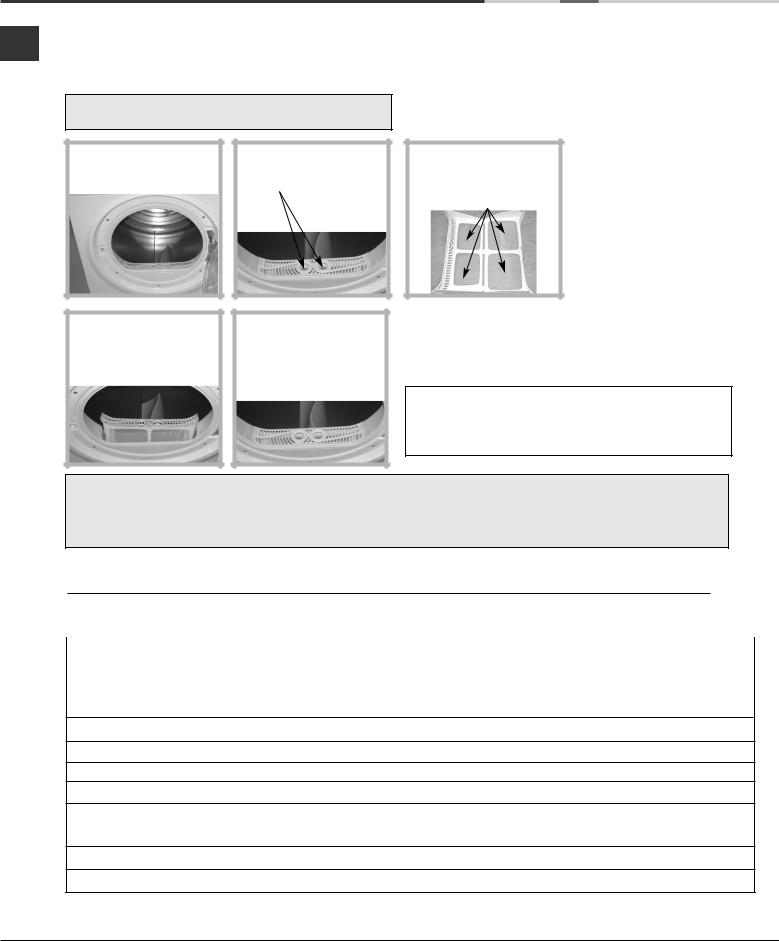
Important Information
For your Venting dryer to operate efficiently, you must follow the regular maintenance schedule shown below:
GB
Fluff Filter...
! You MUST clean the fluff filter after EVERY drying cycle.
STEP 1.
Open the door of your dryer.
STEP 4.
Refit the filter, with the curved side towards you.
STEP 2.
Pull out the filter (using the two finger grips).
STEP 5.
Make sure the filter is pushed fully home.
- NEVER run the dryer without the filter in position.
STEP 3.
Open the filter and clean any fluff deposits from the filter mesh.
! Failure to clean the filter after EVERY drying cycle will affect the drying performance of your machine.
-It will take longer to dry and as a result will use more electricity during drying.
!You MUST clean fluff build up around the filter housing and the vent tube periodically, EVERY two or three months:
-Check the vent tube and any permanent venting fixture to make sure that there has been no accumulation of fluff or lint, and remove it.
-Remove lint that collects around the filter and the outlet vents.
Product Data... (EU Regulation 392/2012)
Rated capacity of Cotton laundry for the standard programme at full load 7 kg |
Energy efficiency class B |
|
|
The weighted Annual Energy Consumption (AEc) 472.5 kWh
Consumption per year, based on 160 drying cycles of the standard cotton programme at full and partial load, and the consumption of the low-power modes. Actual energy consumption per cycle will depend on how the appliance is used.
This household tumble dryer is a Non-Automatic Air-Vented Dryer
Energy consumption : full load Edry 4.02 kWh, partial load Edry1/2 2.14 kWh
Power consumption : off-mode (Po) 0.06 W, left-on mode (Pl) - W
Duration of the ‘left-on mode’ for power management systems - minutes
The ‘standard cotton programme’ suitable for drying normal wet cotton laundry that is the most efficient programme in terms of energy consumption for cotton used at full and partial load is High Heat
Programme time (minutes) : weighted (Tt) full & partial load 83, full load (Tdry) 109, partial load (Tdry1/2) 63
Airborne acoustical noise emissions 69 dB(A) re 1 pW
This data is also available on the website http://www.hotpoint.eu/hotpoint/
2
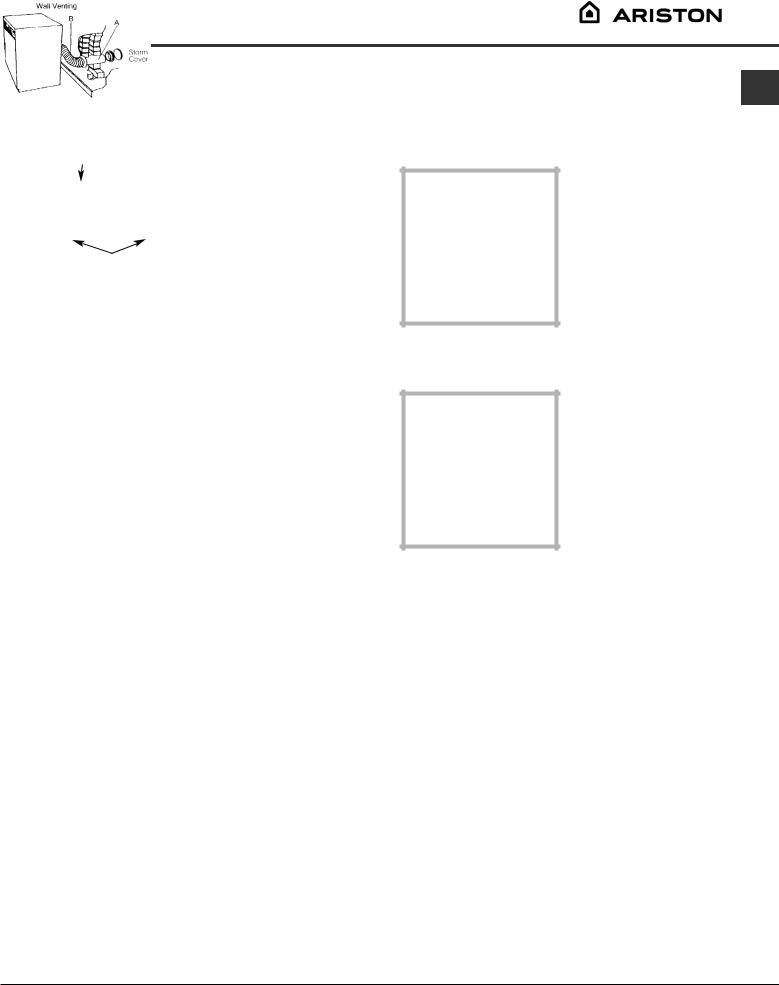
Installation
Where to put your dryer
●Place your dryer at a distance from gas ranges, stoves, heaters, or cook tops because flames can damage the appliance.
Minimum gap 10mm |
● |
If you are going to install the |
|
||
|
|
appliance under a work |
|
|
|
|
|
counter, be sure to leave a |
|
|
10mm space between the |
|
|
top and any other objects on |
|
|
or above the machine and a |
Minimum gaps |
|
15mm space between the |
15mm |
|
sides and lateral furnishings |
|
|
or walls. This is to ensure |
|
|
proper air circulation. Make sure that the back vents are not obstructed.
●Make sure you put your dryer in an environment that is not damp and has proper air circulation throughout, the dryer will not operate efficiently in an enclosed space or cupboard.
! We do not recommend that the dryer is installed in a cupboard but the dryer must never be installed behind a lockable door, a sliding door or a door with a hinge on the opposite side to that of the dryer door.
Ventilation
The Dryer dries your laundry by drawing in cool, clean and relatively dry air, heating it, and then distributing it through the clothes as they are gently tumbled. For optimum performance, the moist air is then blown out through a vent tube at the back of the dryer.
When the dryer is in use, there has to be adequate ventilation to avoid the back flow of gases into the room from appliances burning other fuels, including open fires.
Mobile venting
A vent tube must always be fitted when the dryer is used in conjunction with Mobile Venting.
The tube must be fitted securely into the back of the dryer (see Dryer Description). If possible, it is always best to connect the tube to a permanent
outlet close to the dryer. If permanent installation is not possible, the dryer will work just as well with the tube passing through a partly-opened window.
!Ensure that the end of the tube is not directed toward the air intake vent at the rear of the dryer.
!The vent tube should not exceed 2.4 metres in length and should be kept free of any possible accumulation of fluff, lint and water by shaking it out frequently. Always ensure that the tube is not squashed.
Permanent venting
GB
In conjunction with the vent tube we recommend using a Wall/Window Vent Kit, available at a retail location or the nearest Spare Parts Dealer.
Wall mounting
1. Leave an opening in the wall to the left of the dryers proposed position.
2.Keep the tube as short and straight as possible to prevent condensed moisture from backing up into the dryer.
3.Similarly, the duct in the wall should slope downwards towards the outside.
Window mounting
1.With a stacked dryer the hole in the window should ideally be made below the vent.
2.The tube should be kept as short as possible.
Depending on how often you use your dryer, it is essential that areas A and B are checked periodically to remove lint or debris.
The vent tube adaptor must be fitted securely thus preventing any humid air from being emitted back into the room.
!The Dryer should not be pushed so far back that the tube adaptor is pulled out of position or the tube is squashed or bent.
!The tube should be kept clear of the air intake vent and kinks or ‘U’ bends must be avoided as these will obstruct the tube or trap condensation.
3
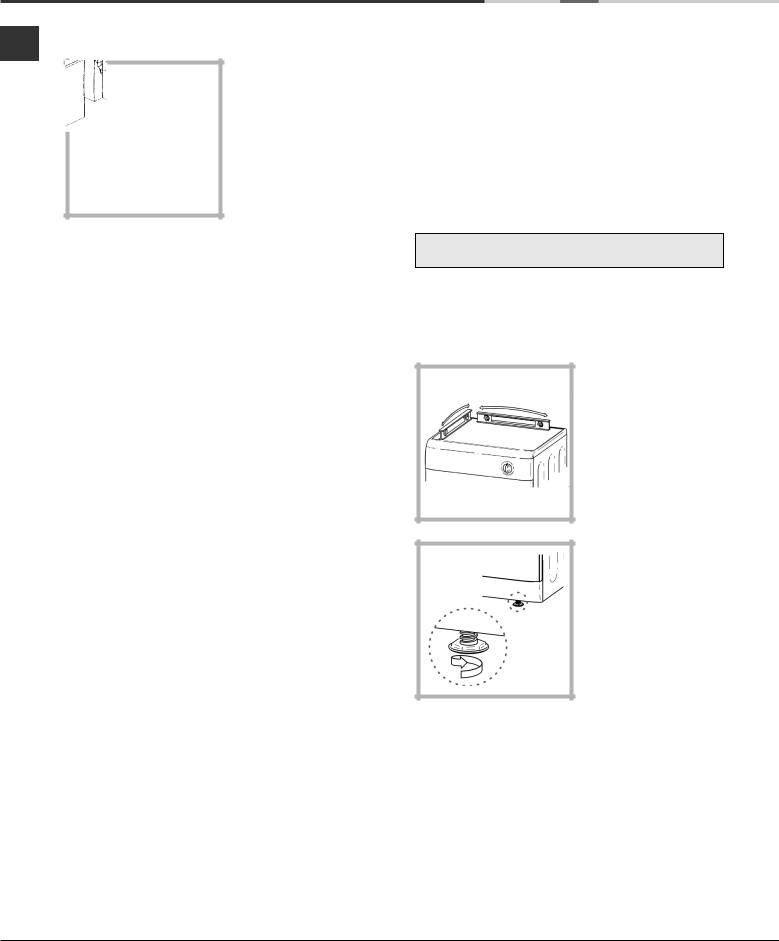
Installation
Open window venting
GB
The end of the tube should be directed downwards, to prevent warm moist air from condensing in the room or in the dryer.
!Ensure that the dryer is adequately ventilated and that the end of the vent tube is not directed towards the air intake duct.
!The vent tube must always be fitted for optimum performance.
!Make sure that the vent tube and air intake vents are not obstructed or blocked.
!The dryer must not recycle exhaust air.
!Misusing a tumble dryer may create a fire hazard.
!Do not discharge exhaust air into a flue which is used for exhaust fumes from other appliances that burn gas or other fuels.
!Do not discharge exhaust air into an extraction system or any duct with an extractor fan. This will affect the way the thermal controls operate and can result in a fire hazard.
Electrical connections
Make sure of the following before you insert the plug into the the electrical socket:
●The socket must be grounded.
●The socket must be able to sustain the machines maximum power, which is indicated on the rating label (see Dryer Description).
●Power voltage must be within the values indicated on the rating label (see Dryer Description).
●The socket must be compatible with the dryers plug. Should this not be the case, replace the plug or the socket.
!The dryer must not be installed outdoors, even if the space is sheltered. It can be very dangerous if it is exposed to rain or storms.
!Once installed, the dryers electrical wire and plug must be within easy reach.
!Do not use extension cords.
!The power cord must not be bent or squashed.
!The power supply cord should be checked periodically and replaced by a cord specially prepared for this dryer and fitted only by authorised technicians (see Service). New or longer power cords are supplied at an extra charge by authorised dealers..
!The manufacturer denies any responsibility should any of these rules not be followed.
!If in doubt about any of the above consult a qualified electrician.
Levelling your dryer
The dryer must be installed level for correct operation.
When you have installed your dryer in its final location check that it is level first side to side, then front to back.
If the dryer is not level, use a wooden block to support it while adjusting the two front legs up or down, until your dryer is level.
Before you start using your dryer
Once you have installed your dryer and before you use it, clean the inside of the drum to remove any dust that could have accumulated during transport.
4
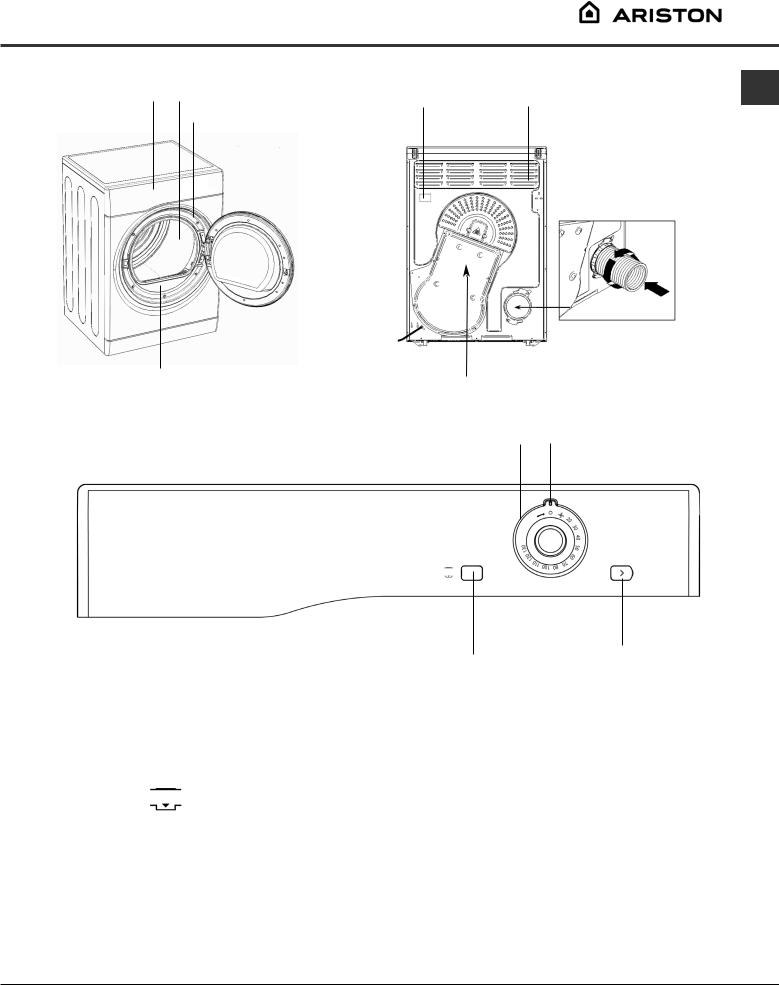
Dryer Description
The front
Control Panel |
Drum |
Model & Serial numbers
Filter
Control panel
The back
Rating plate
Caution: Hot!
TIMER
Knob
HEAT
Button
GB
Air Intake Vent
Vent Tube fitted here
Indicator
START
Button
The START button begins drying a selected programme (see Start and Programmes).
The HEAT button selects drying temperature (see Start and Programmes).
OUT: LOW heat
IN: HIGH heat
The TIMER knob sets the drying time: rotate it clockwise, never counter-clockwise, until the indicator is pointing to the drying time you want to select (see Start and Programmes).
5

Start and Programmes
Choosing a programme
GB
1.Plug the dryer into the electrical socket.
2.Sort your laundry according to fabric type (see Laundry).
3.Open the door and make sure the filter is clean and in place (see Maintenance).
4.Load the machine and make sure items are not in the way of the door seal. Close the door.
5.Choose the drying time by checking the Drying Guide table for the type of fabric you are drying (see Laundry).
-Set the temperature with the HEAT button.
-Select a drying time by rotating the TIMER knob clockwise.
6.Press the START button to begin.
During the drying programme, you can check on your laundry and take out items that are dry while others continue drying. When you close the door again, press the START button in order to resume drying.
7.About 10 minutes before the programme is completed, it enters the final COOL TUMBLE phase (fabrics are cooled), which should always be allowed to complete.
8.Open the door, take the laundry out, clean the filter and replace it (see Maintenance).
9.Unplug the dryer.
6
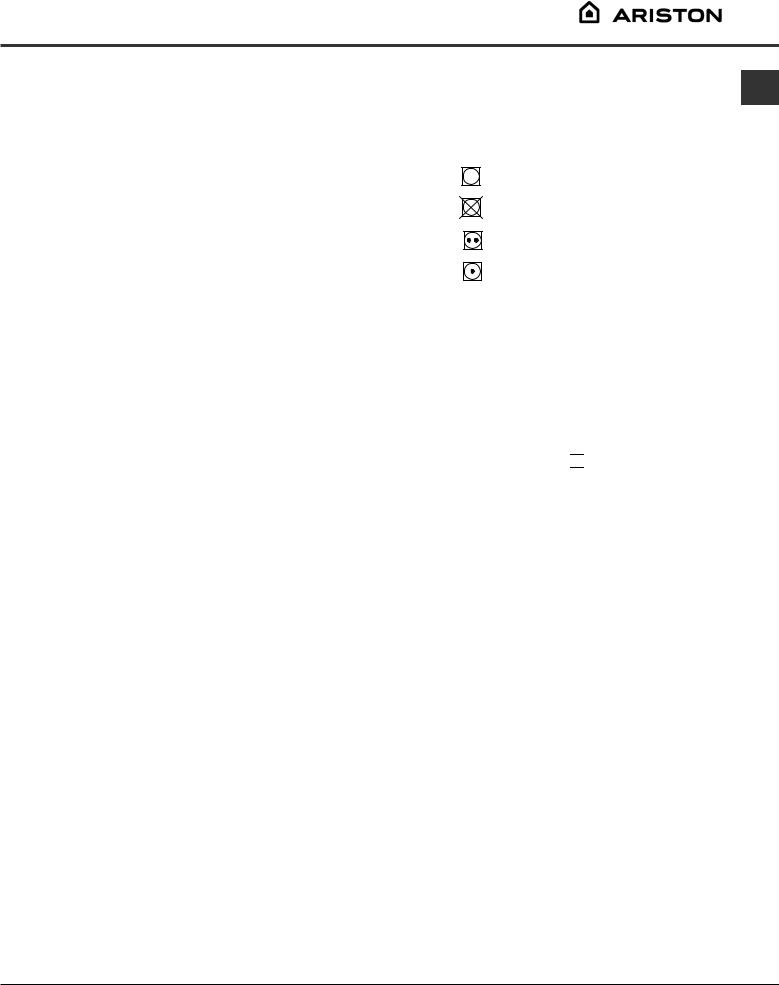
Laundry
Sorting your laundry
●Check symbols on clothing labels to make sure that the articles can be tumble dried.
●Sort laundry by fabric type.
●Empty pockets and check buttons.
●Close zippers and hooks and tie loose belts and strings.
●Wring out each item in order to eliminate as much
excess water as possible.
! Do not load dripping wet clothes into the dryer.
Maximum load size
Do not load more than maximum capacity. These numbers refer to dry weight: Natural fibres: 7kg max (15lb)
Synthetic fibres: 3kg max (6.6lb)
! DO NOT overload the dryer as this could result in reduced drying performance.
Typical weights
Note: 1kg = 1000g |
(1lb = 16oz) |
|
|
Clothes |
|
|
|
|
|
|
|
Blouse |
Cotton |
150g |
(5oz) |
|
Other |
100g |
(3oz) |
|
|
|
|
Dress |
Cotton |
500g |
(1lb 2oz) |
|
Other |
350g |
(12oz) |
|
|
|
|
Jeans |
|
700g |
(1lb 6oz) |
|
|
|
|
10 nappies |
|
1000g |
(2lb 3oz) |
Shirt |
Cotton |
300g |
(10oz) |
|
Other |
200g |
(7oz) |
|
|
|
|
T-Shirt |
|
125g |
(4oz) |
|
|
|
|
|
|
|
|
Household Items |
|
|
|
|
|
|
|
Duvet cover |
Cotton |
1500g |
(3lb 5oz) |
(Double) |
Other |
1000g |
(2lb 3oz) |
|
|
|
|
Large Tablecloth |
|
700g |
(1lb 6oz) |
|
|
|
|
Small Tablecloth |
|
250g |
(9oz) |
|
|
|
|
Tea Towel |
|
100g |
(3oz) |
|
|
|
|
Bath Towel |
|
700g |
(1lb 6oz) |
|
|
|
|
Hand Towel |
|
350g |
(12oz) |
|
|
|
|
Double Sheet |
|
500g |
(1lb 2oz) |
|
|
|
|
Single Sheet |
|
350g |
(12oz) |
|
|
|
|
At the end of a drying cycle, cottons could still be damp if you grouped cottons and synthetics together. If this happens simply give them an additional short period of drying.
●Note: The last 10 minutes of any time set is the Cool Tumble, so allow for this when setting the time, as this period will not dry your laundry.
Wash Care Labels
GB
Look at the labels on your garments, especially when tumble drying for the first time. The following symbols are the most common:
May be tumble dried
Do not tumble dry
Tumble dry at high heat setting
Tumble dry at low heat setting
Items not suitable for tumble drying
●Articles that containing rubber or rubber-like materials or plastic film (pillows, cushions, or PVC rainwear), any other flammable articles or objects that contain flammable substances (towels soiled with hair spray).
●Glass fibres (certain types of draperies)
●Items which have been dry cleaned
●Items with the ITCL Code  (see Special clothing items). These can be cleaned with special
(see Special clothing items). These can be cleaned with special
at-home dry cleaning products. Follow instructions carefully.
●Large bulky items (quilts, sleeping bags, pillows, cushions, large bedspreads etc). These expand when drying and would prevent airflow through the dryer.
7
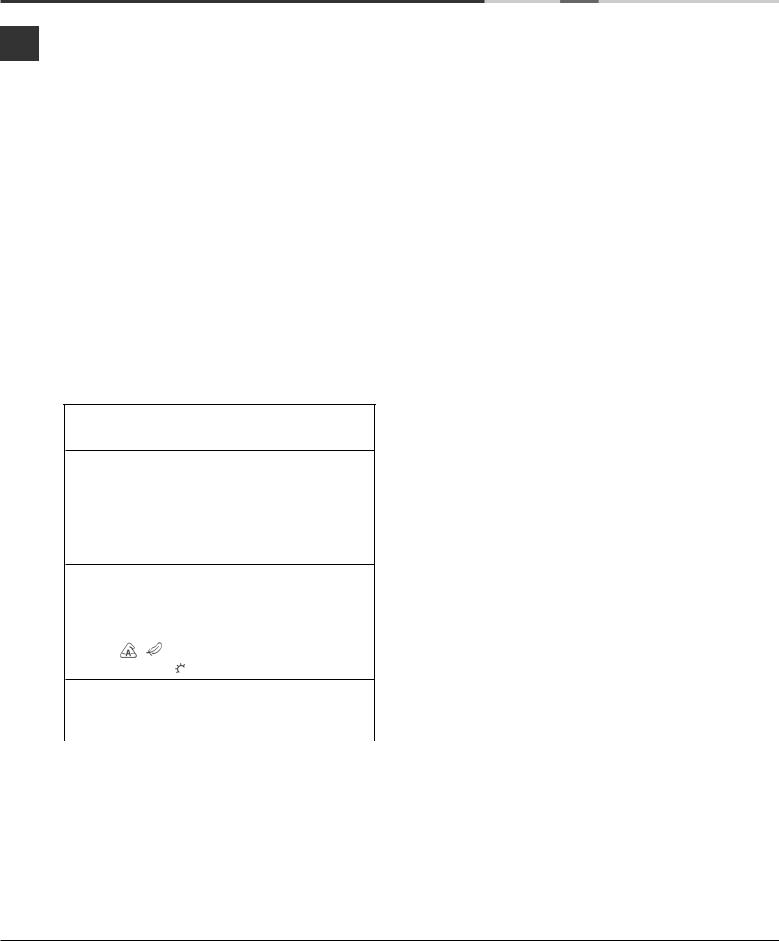
Laundry
Special clothing items
GB
Blankets and Bedspreads: acrylic items (Acilan, Courtelle, Orion, Dralon) must be dried with special care on LOW heat setting. Avoid drying for a long period of time.
Pleated or creased garments: read the manufacturer’s drying instructions on the garment.
Starched articles: do not dry these with non-starched items. Make sure that as much of the starch solution is removed from the load as possible before placing it in the dryer. Do not over-dry: the starch will become powdery and leave your clothing limp, which defeats the purpose of starch.
Drying times
The table below presents APPROXIMATE drying times in minutes. Weights refer to dry garments:
Cottons 

High (full) Heat 
Drying times 800-1000rpm in washing machine
1kg |
2kg |
3kg |
4kg |
5kg |
6kg |
7kg |
20-30 |
35-45 |
45-60 |
60-70 |
70-80 |
80-100 |
90-120 |
|
|
|
|
|
|
|
Synthetics 
High (full) Heat 
Drying times on reduced spin in washing machine
1kg |
2kg |
3kg |
20-30 |
35-45 |
45-60 |
|
|
|
Acrylics |
|
|
Low (gentle) Heat |
|
|
Drying times on reduced spin in washing machine
|
1kg |
2kg |
|
|
|
25-40 |
40-60 |
|
|
|
|
Times are approximate and can vary depending upon:
●Amount of water retained in clothes after spin cycle: towels and delicates retain a lot of water.
●Fabrics: items that are the same type of fabric but different textures and thicknesses may not have the same drying time.
●Quantity of laundry: single items or small loads may take longer to dry.
●Dryness: If you are going to iron some of your clothes, they can be taken out while still a bit damp. Others can be left longer if you need them to be completely dry.
●Heat setting.
●Room temperature: if the room where the dryer is located is cold, it will take longer for the dryer to dry your clothes.
●Bulk: some bulky items can be tumble dried with care. We suggest that you remove these items several times, shake them out, and return them to the dryer until finished.
! Do not over-dry your clothes.
All fabrics contain a little natural moisture, which keeps them soft and fluffy.
8
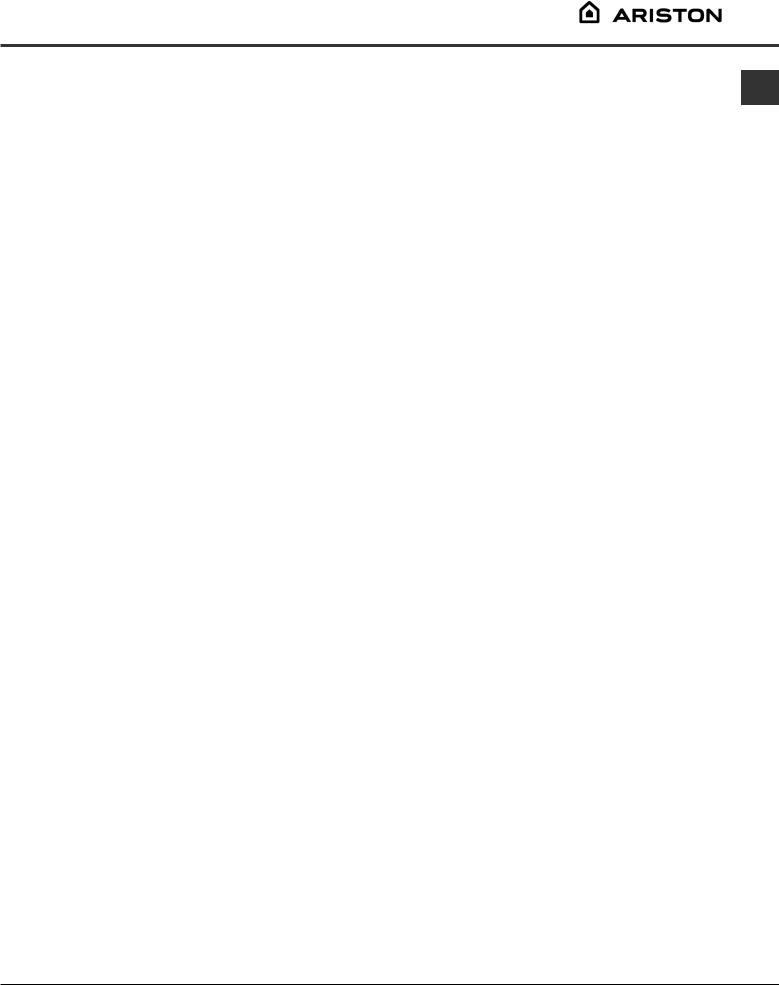
Warnings and Suggestions
! The appliance has been designed and built according to international safety standards.
These warnings are given for safety reasons and must be followed carefully.
General safety
●This tumble dryer is not intended for use by persons (including children) with reduced physical, sensory or mental capabilities, or lack of experience and knowledge, unless they have been given supervision or instruction concerning use of the appliance by a person responsible for their safety.
●This tumble dryer has been designed for home, and not professional use.
●Do not touch the appliance while barefoot or with wet hands or feet.
●Unplug the machine by pulling on the plug, not the cord.
●Children must not be in proximity of the dryer when in use. After using the dryer, turn it off and unplug it. Keep the door closed to make sure that children do not use it as a toy.
●Children should be supervised to ensure that they do not play with the dryer.
●The appliance must be installed correctly and have proper ventilation. The air intake vents behind the machine, the outlet vents and the vent tube should never be obstructed (see Installation).
●Never direct the vent tube outlet towards the air intake at the back of the machine.
●Never allow the tumble dryer to recycle exhaust air.
●Never use the dryer on carpeting where the pile height would prevent air from entering the dryer from the base.
●Check to see if the dryer is empty before loading it.
●The back of the dryer could become very hot. Never touch it while in use.
●Do not use the dryer unless the filter is securely in place (see Maintenance).
●Do not overload the dryer (see Laundry) for maximum loads.
●Do not load items that are dripping wet.
●Carefully check all instructions on clothing labels (see Laundry).
●Do not tumble dry large, very bulky items.
●Do not tumble dry acrylic fibres at high temperatures.
●Complete each programme with its Cool Tumble Phase.
●Do not turn off the dryer when there are still warm items inside.
●Clean the filter after each use (see Maintenance).
●Do not allow lint to collect around the dryer.
●Never climb on top of the dryer. It could result in damage.
●Always follow electrical standards and requirements (see Installation).
●Always buy original spare parts and accessories (see Service).
To minimise the risk of fire in your tumble dryer, the |
GB |
following should be observed: |
●Tumble dry items only if they have been washed with detergent and water, rinsed and been through the spin cycle. It is a fire hazard to dry items that HAVE NOT been washed with water.
●Do not dry garments that have been treated with chemical products.
●Do not tumble dry items that have been spotted or soaked with vegetable or cooking oils, this constitutes a fire hazard. Oil-affected items can ignite spontaneously, especially when exposed to heat sources such as a tumble dryer. The items become warm, causing an oxidisation reaction with the oil, Oxidisation creates heat. If the heat cannot escape, items can become hot enough to catch fire. Piling, stacking or storing oil-effected items can prevent heat from escaping and so create a fire hazard.
If it is unavoidable that fabrics containing vegetable or cooking oil or those that have been contaminated with hair care products be placed in a tumble dryer they should first be washed with extra detergent - this will reduce, but not eliminate the hazard. The cool tumble phase should be used to reduce the temperature of the items. They should not be removed from the dryer and piled or stacked while hot.
●Do not tumble dry items that have previously been cleaned in or washed in, soaked in or soiled with petrol/gasoline, dry cleaning solvents or other flammable or explosive substances. Highly flammable substances commonly used in domestic environments including cooking oil, acetone, denatured alcohol, kerosene, spot removers, turpentine, waxes and wax removers. Ensure these items have been washed in hot water with an extra amount of detergent before being dried in the tumble dryer.
●Do not tumble dry items containing foam rubber (also known as latex foam), or similarly textured rubber like materials. Foam rubber materials can, when heated, produce fire by spontaneous combustion.
●Fabric softener or similar products should not be used in a tumble dryer to eliminate the effects of static electricity unless the practice is specifically recommended by the manufacturer of the fabric softener product.
●Do not tumble dry undergarments that contain metal reinforcements eg. bras with metal reinforcing wires. Damage to the tumble dryer can result if the metal reinforcements come loose during drying.
●Do not tumble dry rubber, plastic articles such as shower caps or babies waterproof covers, polythene or paper.
●Do not tumble dry rubber backed articles, clothes fitted with foam rubber pads, pillows, galoshes and rubber coated tennis shoes.
●Remove all objects from pockets, especially lighters (risk of explosion).
!WARNING: Never stop the dryer before the end of the drying cycle unless all items are quickly removed and spread out so that the heat is dissipated.!
Saving energy and respecting the environment
●Wring out items to eliminate excess water before tumble drying (if you use a washing machine first, select a high spin cycle). Doing this will save time and energy during drying.
●Always dry full loads - you save energy: single items or small loads take longer to dry.
●Clean the filter after each use to contain energy consumption costs (see Maintenance).
9

Maintenance and Care
GB |
Switching off the electricity |
Check the drum after each cycle |
|
|
|
|
|
|
Unplug your dryer when not using it, when cleaning it and during all maintenance operations.
Turn the drum manually in order to remove small items (handkerchiefs) that could have been left behind.
Clean the filter after each cycle
The filter is an important part of your dryer:
it accumulates lint and fluff that is formed while drying. Small items could also become trapped in the filter. When finished drying, therefore, clean the filter by rinsing it under running water or with your vacuum cleaner. Should the filter become clogged up, the airflow inside the dryer will be seriously compromised: drying times lengthen and you will consume more energy. It may also damage your dryer.
The filter is found in front of the dryer trim
(see diagram).
Removing the filter:
1. Pull the plastic grip of the filter upwards (see diagram).
2. Open the filter and clean the lint from the inside.
3.Replace it correctly. Ensure the filter is fully located flush into the tumble dryer trim.
4.Remove any lint that has built up on the inside of the door and around the door seal.
! Do not use the dryer without replacing the filter.
Cleaning the drum
! Do not use abrasives, steel wool or stainless steel cleaning agents to clean the drum.
A coloured film may start to appear on the stainless steel drum, this may be caused by a combination of water and, or cleaning agents such as fabric conditioner from the wash. This coloured film will not affect the dryer performance.
Cleaning
●External parts in metal or plastic and rubber parts can be cleaned with a damp cloth.
●Periodically check the vent tube and any permanent venting fixture to make sure that there has been no accumulation of fluff or lint, and remove it.
●Remove lint that collects around the filter and the outlet vents.
!Do not use solvents or abrasives.
!Your dryer uses special bearing components which do not need lubrication.
!Have your dryer checked regularly by authorised technicians to ensure electrical and mechanical safety (see Service).
10
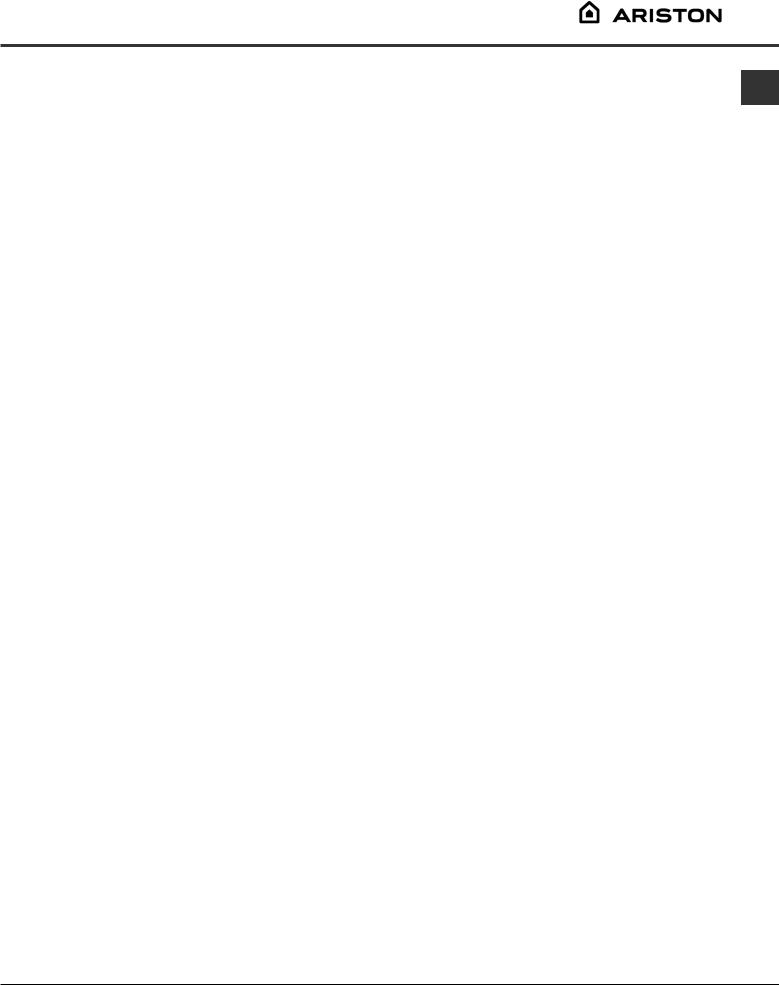
Troubleshooting
One day your dryer seems not to be working. Before you call your Service Centre (see Service), go through the
following troubleshooting suggestions: |
GB |
|
|
||
Problem: |
Possible causes / Solution: |
|
The dryer won’t start. |
● |
The plug is not plugged into the socket, or not making contact. |
|
● |
There has been a power failure. |
|
● |
The fuse has blown. Try to plug another appliance into the socket. |
|
● |
You are using an extension cord? Try to plug the dryer’s power cord |
|
|
directly into the socket. |
|
● |
The TIMER knob has not been set properly (see Start and Programmes). |
|
● |
The START button has not been pressed (see Start and Programmes). |
|
● |
The START button was pressed with the door open. Make sure the door is |
|
|
closed before pressing the START button (see Start and Programmes). |
! If the START button is pressed with the door open the dryer will not start. Close the door, wait for a few seconds and then press the START button again (see Start and Programmes).
It is taking a long time to dry.
●The filter has not been cleaned (see Maintenance).
●The temperature setting is not ideal for the type of fabric you are drying (see Start and Programmes).
●The correct programme has not been selected for the load (see Start and Programmes).
●The flexible vent tube is obstructed (see Installation).
●The air intake vent is obstructed (see Installation).
●The permanent ventilation flap on the storm cover is obstructed (see Installation).
●The items were too wet (see Laundry).
●The dryer was overloaded (see Laundry).
11
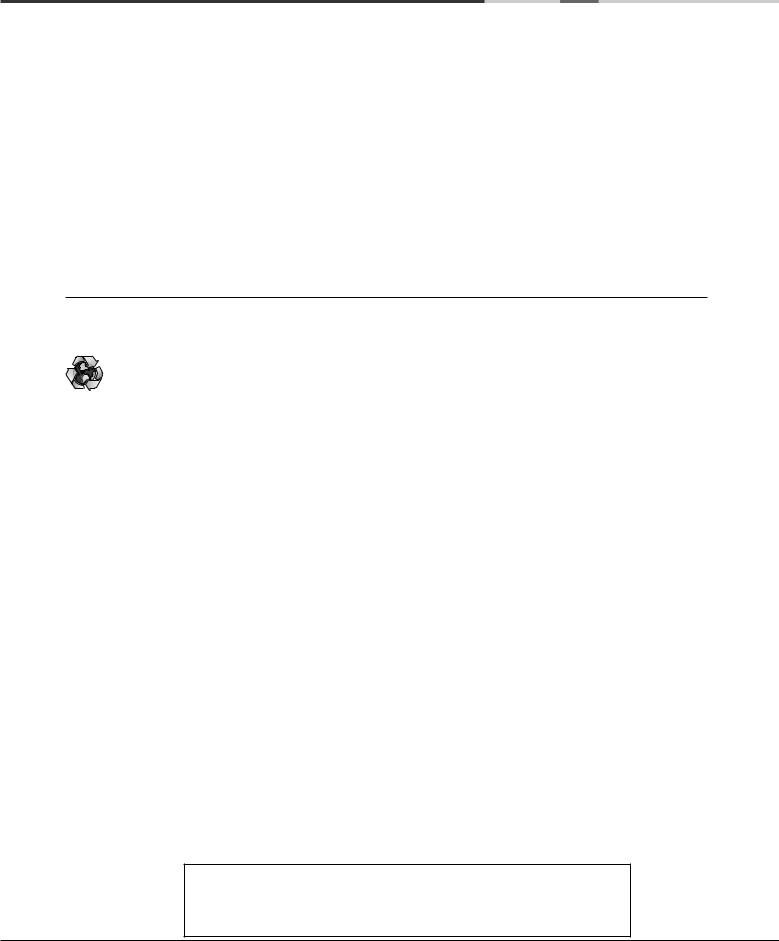
Service
|
Before calling the Service Centre: |
||
GB |
|||
|
|
||
|
● |
Use the troubleshooting guide to see if you can |
|
|
|||
|
|
solve the problem yourself (see Troubleshooting). |
|
|
● |
If not, turn off the dryer and call the Service Centre |
|
|
|
closest to you. |
|
What to tell the Service Centre:
●name, address and post code.
●telephone number.
●the type of problem.
●the date of purchase.
●the appliance model (Mod.).
●the serial number (S/N).
This information can be found on the data label inside the door of the machine.
Spare Parts
This dryer is a complex machine. Repairing it yourself or having a non-authorised person try to repair it could cause harm to one or more persons, could damage the machine and could invalidate the spare parts warranty.
Call an authorised technician if you experience problems while using the machine.
Recycling and Disposal Information
As part of our continued commitment to helping the environment, we reserve the right to use
quality recycled components to keep down customer costs and minimise material wastage.
●Disposing of the packaging material: follow local regulations, so the packaging can be recycled.
●To minimise risk of injury to children, remove the door and plug - then cut off mains cable, flush with the appliance. Dispose of these parts separately to ensure that the appliance can no longer be plugged into a mains socket.
 This appliance conforms to the following EC Directives:
This appliance conforms to the following EC Directives:
-2006/95/EC (Low Voltage Equipment)
-2004/108/EC (Electromagnetic Compatibility)
12
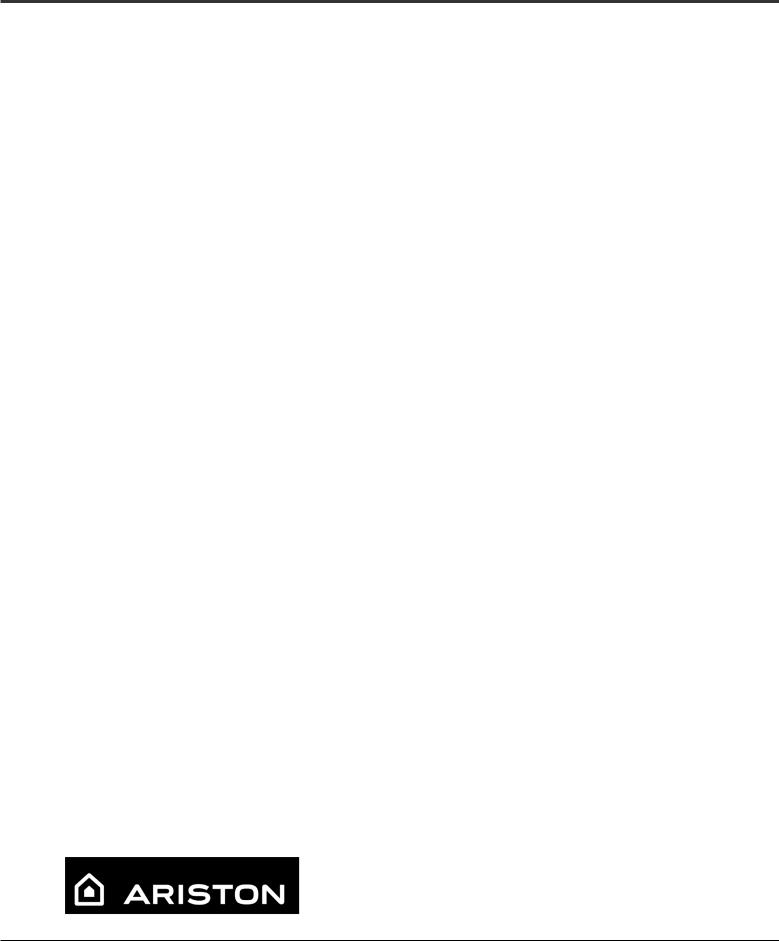
Notice d’utilisation et installation
SÈCHE-LINGE
GB |
|
F |
|
E |
|
|
|
|
|
|
|
English, 1 |
Français, 13 |
Español, 25 |
|||
|
|
|
|
|
|
P |
|
A |
|
FA |
|
|
|
|
|
|
|
Português, 37 |
Arabic, 60 |
Farsi, 72 |
|||
Table des Matières |
F |
|
|
Informations Importantes, 14 |
|
|
|
Données relatives au produit, 14 |
|
Installation, 15-16 |
|
Où installer votre sèche-linge |
|
Ventilation |
|
Connexions électrique |
|
Caler votre sèche-linge |
|
Avant de commencer à utiliser votre |
|
sèche-linge |
|
Description du sèche-linge, 17
Vue de face
Vue de l’arrière
Panneau de commandes
TVM 70C
Démarrage et programmes, 18
Choisir un programme
Linge, 19-20
Trier votre linge Étiquettes d’entretien Vêtements spéciaux Temps de séchage
Avertissements et Suggestions, 21
Sécurité générale
Économiser de l’énergie et respecter l’environnement
Entretien et Nettoyage, 22
Éteindre l’électricité
Nettoyer le filtre après chaque cycle Vérifier le tambour après chaque cycle Nettoyer le sèche-linge
Que faire en cas de panne, 23
Service Après-vente, 24
Mise au rebut
!Conservez cette notice d’utilisation et d’installation à portée de main de manière à pouvoir vous y référer si nécessaire. Emmenez-la avec vous si vous déménagez, et, si vous vendez cet appareil ou que vous le donniez à un tiers, faites en sorte que cette notice accompagne le sèche-linge de manière à ce que le nouveau propriétaire soit informé des avertissements et suggestions concernant le fonctionnement de ce sèche-linge.
!Lisez attentivement ce mode d’emploi; les pages suivantes contiennent des informations importantes concernant l’installation et des suggestions relatives au fonctionnement de cet appareil.
 Ce symbole vous rappele de lire le livret d’instructions.
Ce symbole vous rappele de lire le livret d’instructions.
13
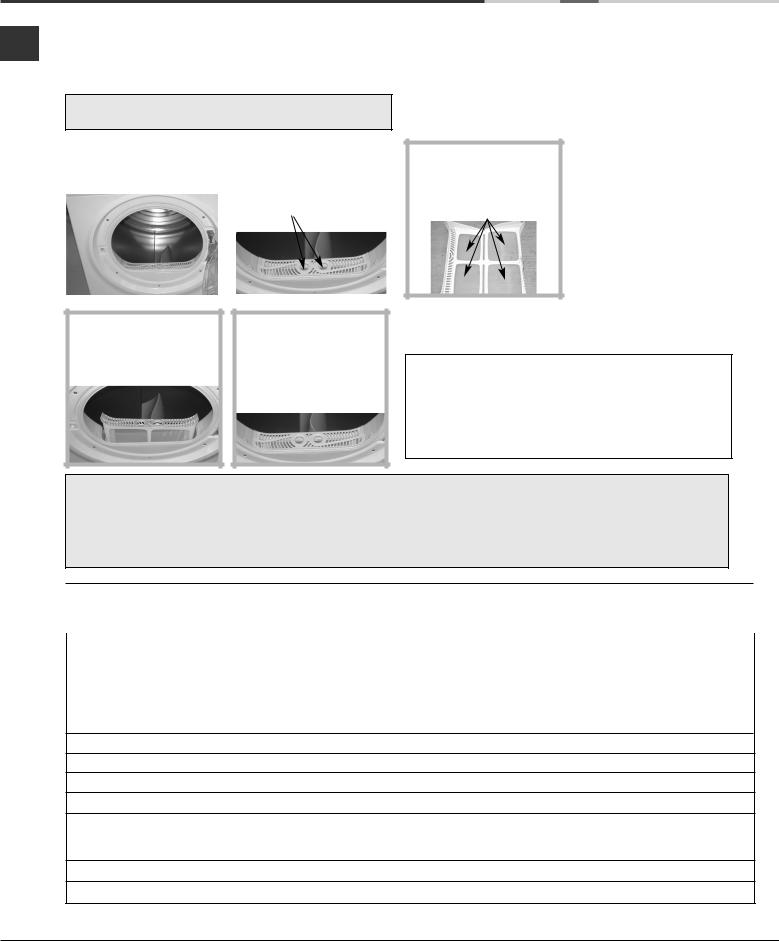
Informations Importantes
Pour que votre sèche-linge à ventilation fonctionne efficacement, vous devez suivre le programme d’entretien
F |
courant décrit ci-dessous : |
|
Filtre...
! Vous devez IMPERATIVEMENT nettoyer le filtre à peluches A CHAQUE cycle de séchage.
ETAPE 1. |
|
ETAPE 2. |
Ouvrez la porte du |
|
Sortez le filtre (à l'aide |
sèche-linge. |
|
des deux encoches |
|
|
passe-doigts) |
|
|
|
|
|
|
ETAPE 3.
Ouvrez le filtre et débarrassez-le des peluches qui se seraient déposées dans le maillage.
ETAPE 4.
Remontez le filtre.
- Veillez à orienter les flèches vers vous.
ETAPE 5.
Enforce le filtre à fond. - NE faites JAMAIS
fonctionner le sèche-linge sans avoir remis en place le filtre
! Négliger de nettoyer le filtre après CHAQUE cycle de séchage nuira aux performances de séchage de votre machine.
-Le temps de séchage sera plus long et la consommation électrique sera en conséquence plus importante.
! Vous devez IMPERATIVEMENT enlever périodiquement les accumulations de peluches autour du logement du filtre et du tube d’évacuation, TOUS les deux ou trois mois :
-Contrôlez le tube et l’installation fixe d’évacuation de façon à vérifier qu’il n’y a pas d’accumulation de peluches. Le cas échéant, enlevez-les.
-Enlevez les peluches qui s’accumulent autour du filtre et des orifices d’évacuation.
Données relatives au produit... (règlement UE n°392/2012)
Capacité nominale pour le programme standard coton à pleine charge 7 kg |
Classe d'efficacité énergétique B |
|
|
Consommation d'énergie annuelle pondérée (AEc) 472.5 kWh
Consommation annuelle sur la base de 160 cycles de séchage pour le programme coton standard à pleine et à demi-charge, et de la consommation des modes à faible puissance. La consommation réelle d'énergie par cycle dépend des conditions d'utilisation de l'appareil.
Ce sèche-linge domestique à tambour est un Sèche-linge non automatique à évacuation d'air
Consommation d'énergie : pleine charge Edry 4.02 kWh, demi-charge Edry1/2 2.14 kWh
Consommation d'électricité : mode arrêt (Po) 0.06 W, mode laissé sur marche (Pl) - W
Durée du mode laissé sur marche pour le système de gestion de la consommation d'électricité - minutes
Programme coton standard convenant au séchage des articles en coton normalement humides offrant le meilleur rendement en termes de consommation électrique pour les articles en coton à pleine et à demi-charge Température élevée.
Durée du programme (minutes) : pondérée (Tt) à pleine et demi-charge 83, à pleine charge (Tdry) 109, à demi-charge (Tdry1/2) 63
Niveau de puissance acoustique 68 dB(A) re 1 pW
Retrouvez ces données sur le site Internet : http://www.hotpoint-ariston.com/ha/
14

Installation
Où installer votre sèche-linge
●Placez votre sèche-linge à une certaine distance des cuisinières, fourneaux, radiateurs, ou plaques de cuisson à gaz, car les flammes peuvent endommager cet appareil.
minimale espace 10mm |
● |
Si vous installez cet appareil |
|
||
|
|
sous un plan de travail, faites |
|
|
|
|
|
en sorte de laisser un espace |
|
|
de 10 mm entre le dessus |
|
|
de l’appareil et tout autre |
|
|
objet sur ou au-dessus de la |
minimale |
|
machine, et un espace de |
espace 15mm |
|
15 mm entre les côtés et les |
|
|
éléments d’ameublement |
|
|
ou les murs latéraux. Ceci a pour objectif d’assurer une ventilation convenable. Assurez-vous que les orifices de ventilation situés à l’arrière ne soient pas obstrués.
●Faites en sorte d’installer votre sèche-linge dans un environnement qui n’est pas humide et qui est doté d’une bonne circulation d’air dans toute la pièce.
Le sèche linge ne fonctionnera pas efficacement dans un espace clos ou dans un placard.
! Nous vous déconseillons d’installer votre sèche-linge dans un placard. En revanche, le sèche-linge ne doit en aucun cas être placé derrière une porte fermant à clé, une porte coulissante ou une porte montée sur des gonds du côté opposé à la porte de chargement du sèche-linge.
Ventilation
Cet appareil sèche votre linge en aspirant de l’air frais, propre et relativement sec, en le chauffant, et en le distribuant ensuite parmi les vêtements qui sont brassés doucement par la rotation du tambour. Pour une performance optimale, l’air humide est ensuite expulsé à travers un conduit de ventilation situé à l’arrière du sèche-linge. Lorsque le sèche-linge est en marche, une aération adéquate est nécessaire afin d’éviter le retour de gaz dans la pièce, provenant de la combustion d’autres combustibles par des appareils, y compris les feux de cheminée.
Ventilation mobile
Un tuyau de ventilation doit toujours être installé lorsque le sèche-linge est utilisé conjointement avec une Ventilation Mobile. Ce tuyau doit être fixé solidement à l’arrière du sèche-linge (voir la Description du Sèche-linge). Si possible, il vaut toujours mieux connecter ce tuyau à une sortie permanente située près du sèche-linge. Si une installation permanente n’est pas possible, le sèche-linge fonctionnera tout aussi bien en faisant passer le tuyau à travers une fenêtre partiellement ouverte.
! Assurez-vous que l’extrémité du tuyau ne soit pas
F
dirigée vers l’orifice d’entrée d’air à l’arrière du sèchelinge.
! Le tuyau de ventilation ne doit pas dépasser 2,4 mètres de longueur et vous devez faire en sorte d’éviter toute accumulation éventuelle de peluches et d’eau en le secouant fréquemment. Assurez-vous toujours que ce tuyau ne soit pas écrasé.
Ventilation permanente
Conjointement avec le tuyau de ventilation, nous vous recommandons d’utiliser un Kit de Ventilation Mur/Fenêtre, disponible dans le commerce ou chez votre Revendeur de Pièces de Rechange le plus proche.
Montage au mur
1. Laissez une ouverture dans le mur à gauche l’endroit où sera installé le sèche-linge.
2.Faites en sorte que le tuyau soit aussi court et droit que possible pour éviter que de l’humidité condensée ne revienne dans le sèche-linge.
3.De même, le conduit dans le mur doit être incliné vers le bas vers l’extérieur.
Montage à la fenêtre
1. Avec un sèche-linge superposé, le trou dans la fenêtre doit idéalement être effectué au-dessous de l’orifice de ventilation. 2. Le tuyau doit être aussi court que possible.
En fonction de la fréquence à laquelle vous utilisez votre sèche-linge, il est essentiel que les zones A et B soient vérifiées périodiquement pour retirer les peluches ou les débris. L’adaptateur du tuyau de ventilation doit être installé solidement, ce qui évite ainsi que de l’air humide ne soit ré-émis dans la pièce.
!Le sèche-linge ne doit pas être repoussé à une distance telle que l’adaptateur du tuyau soit arraché ou que le tube soit écrasé ou plié.
!Le tuyau doit être placé à l’écart de l’orifice d’entrée d’air ne doit être ni entaillé, ni crasé, ni plié en forme de ‘U’ afin d’évitér d’obstruer le tuyau et de bloquer la condensation.
15
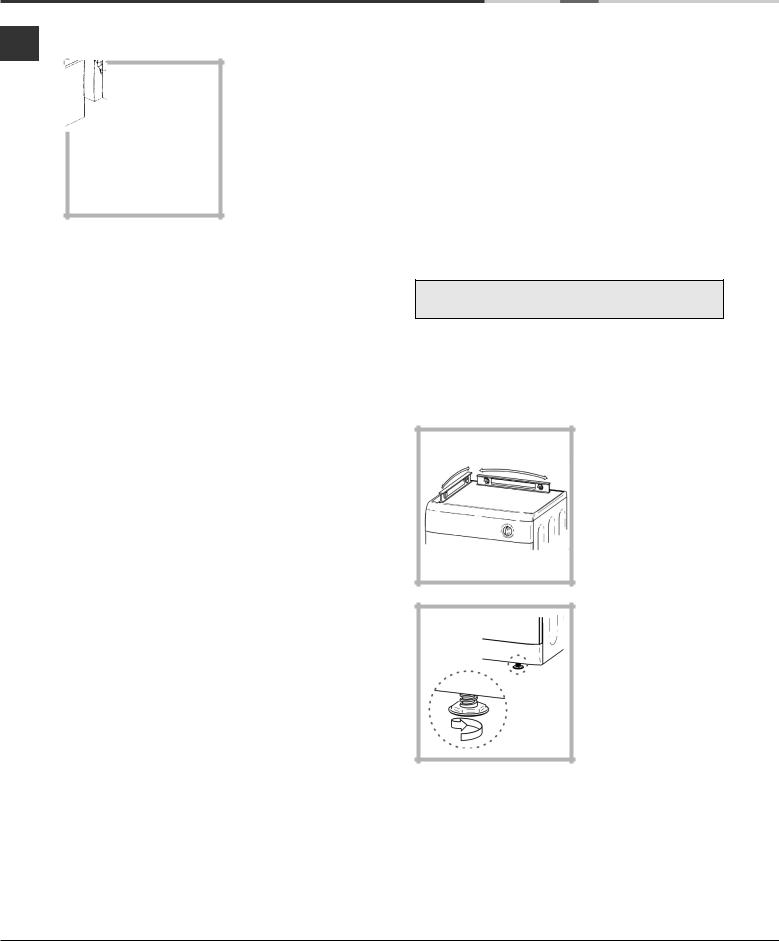
Installation
Ventilation par fenêtre ouverte
F
L’extrémité du tuyau doit être dirigée vers le bas, de manière à éviter que de l’air chaud humide se condense dans la pièce ou dans le sèche-linge.
!Assurez-vous que le sèche-linge soit convenablement ventilé et que l’extrémité du tuyau de ventilation ne soit pas dirigée vers le conduit d’entrée d’air.
!Le tuyau de ventilation doit toujours être installé de manière optimale.
!Assurez-vous que le tuyau de ventilation et les orifices d’entrée d’air ne soient pas obstrués ou bloqués.
!Le sèche-linge ne doit pas recycler de l’air d’évacuation.
!Une mauvaise utilisation d’un sèche-linge peut entraîner un danger d’incendie.
!Ne pas expulser l’air d’évacuation dans un conduit qui est utilisé pour les évacuations des émanations provenant d’autres appareils à combustion de gaz ou d’autres combustibles.
!Ne pas expulser l’air d’évacuation dans un système d’extraction ni dans un conduit équipé d’un ventilateur aspirant. Ceci perturberait la façon dont la régulation thermique fonctionne et pourrait entraîner un danger d’incendie.
Connexions électriques
Assurez-vous des points suivants avant de brancher la fiche de l’appareil dans la prise de courant:
●La prise de courant doit être reliée à la terre.
●La prise de courant doit pouvoir supporter la puissance maximale de la machine, qui est indiquée sur la plaque signalétique de l’appareil (voir la Description du Sèche-linge).
●La tension électrique doit appartenir à la gamme de valeurs indiquée sur la plaque signalétique de l’appareil (voir la Description du Sèche-linge).
●La prise de courant doit être compatible avec la fiche du sèche-linge. Si ce n’est pas le cas, remplacez la fiche ou la prise de courant.
!Le sèche-linge ne doit pas être utilisé à l’extérieur, même si l’espace en question est abrité. Cela peut être dangereux si l’appareil est exposé à la pluie ou à des orages.
!Une fois installés, le cordon d’alimentation et la fiche du sèche-linge doivent être d’accès facile.
!N’utilisez pas de rallonges.
!Le cordon d’alimentation ne doit pas être courbé ou écrasé.
!Le cordon d’alimentation électrique doit être vérifié périodiquement et remplacé par un cordon préparé spécialement pour ce sèche-linge, et installé uniquement par des électriciens agréés (voir Service Après-vente). Des cordons d’alimentation neufs ou plus longs sont fournis par les revendeurs agréés contre un supplément.
!Le fabricant rejète toute responsabilité en cas de non-respect de toutes ou partie de ces règles.
!En cas de doute au sujet des points precedents, consultez un electricien qualfie.
Caler votre sèche-linge
Pour un fonctionnement correct, votre sèche-linge doit être à niveau.
Après avoir installé votre sèche-linge dans son emplacement définitif, veillez à ce qu'il soit bien à niveau tout d'abord latéralement puis devant et derrière.
Si le sèche-linge n'est pas au niveau, utilisez un bloc de bois pour le soutenir pendant que vous ajustez, vers le haut ou vers le bas, les deux pieds et ce, jusqu'à ce que le sèche-linge soit au niveau.
Avant de commencer à utiliser votre sèche-linge
Une fois que vous avez installé votre sèche-linge, et avant de l’utiliser, nettoyez l’intérieur du tambour pour retirer les poussières qui pourraient s’y être accumulées durant le transport.
16
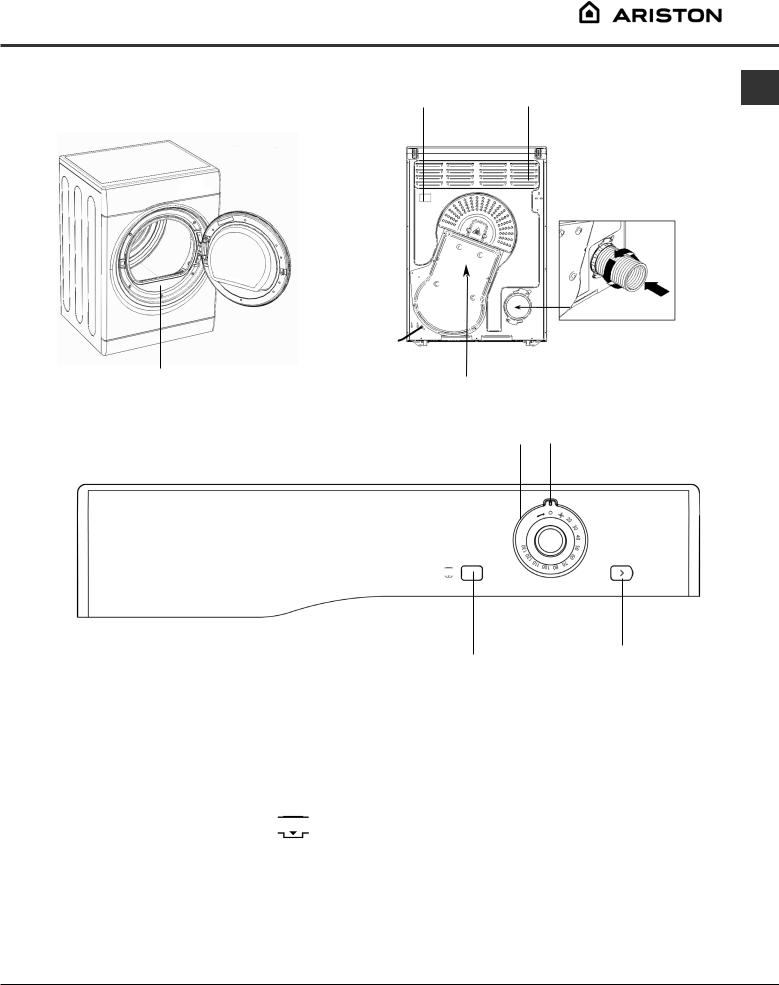
Description du sèche-linge
Vue de face
Panneau de |
|
Tambour |
|
commande |
|
|
Numéro du Modèle |
|
|
|
et Numéro de Série |
|
|
|
|
|
|
|
|
|
|
|
|
Filtre
Panneau de commandes
Vue de l’arrière
Plaque signalétique
Attention:
Chaud!
bouton de
MINUTERIE
bouton
TEMPÉRATURE
F
Orifice d’entrée d’air
Tuyau de ventilation fixé ici
Indicateur
bouton
DÉPART
Le bouton DÉPART commence le séchage selon un programme sélectionné (voir Démarrage et Programmes).
Le bouton TEMPÉRATURE sélectionne la température de séchage (voir Démarrage et Programmes).
Bouton SORTI: température DOUCE Bouton RENTRÉ: température ÉLEVÉE
Le bouton de MINUTERIE règle le temps de séchage: le tourner dans le sens horaire, jamais anti-horaire, jusqu’à ce que l’indicateur pointe sur la durée de séchage que vous désirez (voir Démarrage et Programmes).
17

Démarrage et Programmes
Choisir un programme
F
1.Branchez la fiche du sèche-linge dans la prise électrique.
2.Triez votre linge en fonction du type de textiles (voir Linge).
3.Ouvrez la porte et en assurant-vous que le filtre soit propre et en place (voir Entretien).
4.Chargez la machine et assurez-vous que des articles ne bloquent pas le joint de la porte. Fermez la porte.
5.Choisissez le temps de séchage en vérifant le tableau de Guide de Séchage pour le type de tissu que vous séchez (voir Linge).
-Réglez la température avec le bouton TEMPÉRATURE.
-Sélectionnez un programme de séchage en tournant le bouton de MINUTERIE dans le sens des aiguilles d’une montre.
6.Appuyez sur le bouton DÉPART pour commencer. En cours de programme de séchage, vous pouvez vérifier votre linge et sortir les articles qui sont secs pendant que les autres continuent à sécher. Lorsque vous refermez la porte, appuyez sur le bouton DÉPART afin de continuer le séchage.
7.10 minutes environ avant que le programme ne soit terminé, celui-ci entre dans la phase finale de REFROIDISSEMENT (les textiles sont refroidis), que vous devez toujours laisser se terminer.
8.Ouvrez la porte, sortez votre linge, nettoyez le filtre et remettez-le en place (voir Entretien).
9.Débranchez le sèche-linge.
18
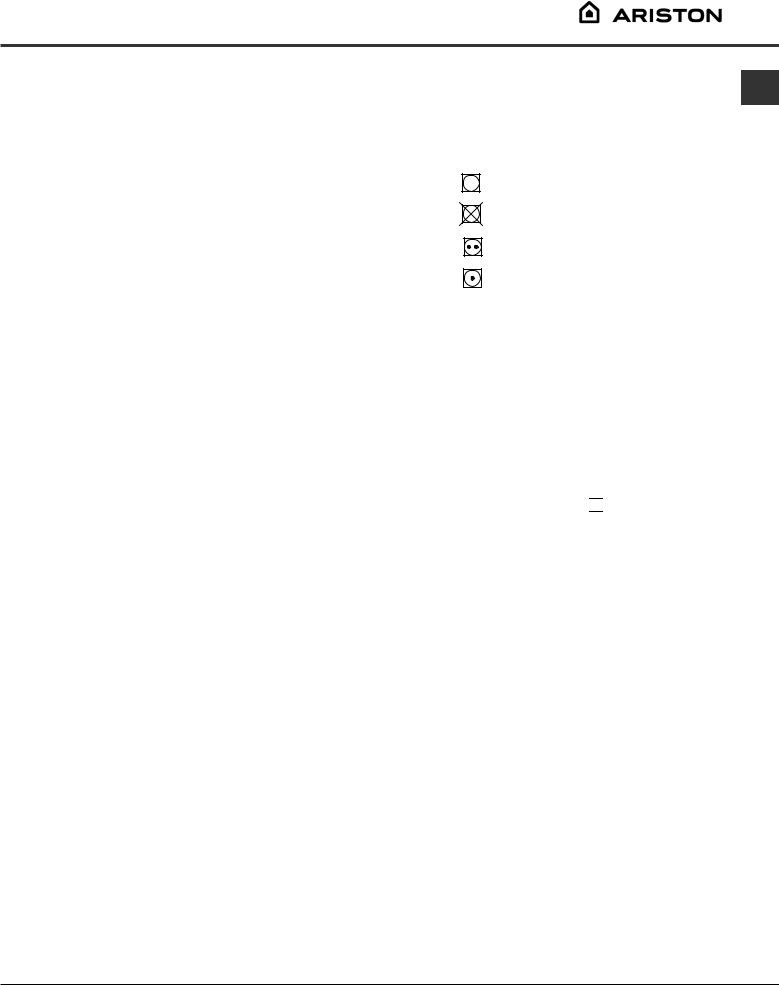
Linge
Trier votre linge
●Vérifiez les symboles sur les étiquettes des vêtements pour vous assurer que les articles peuvent être passés au sèche-linge.
●Triez votre linge par type de textile.
●Videz les poches et vérifiez les boutons.
●Fermez les fermetures Éclair et les crochets et attachez les ceintures et les cordons.
●Essorez chaque article de manière à éliminer
autant d’eau que possible.
! Ne chargez pas de vêtements mouillés qui dégouttent dans le sèche-linge.
Taille maximale de la charge
Ne chargez pas plus que la capacité maximale. Les chiffres suivants font référence au poids sec : Fibres naturelles : 7 kg max.
Fibres synthétiques : 3 kg max
! NE surchargez PAS le sèche-linge car cela pourrait réduire ses performances de séchage.
Charge typique
Remarque: |
1kg = 1000g |
|
|
|
|
|
|
|
|
Vêtements |
|
|
|
|
Chemisier |
|
en coton |
150 g |
|
|
|
Autre |
100 g |
|
|
|
|
|
|
Robe |
|
en coton |
500 g |
|
|
|
Autre |
350 g |
|
|
|
|
|
|
Jeans |
|
|
700 g |
|
10 couches lavables |
|
1000 g |
||
Chemise |
|
en coton |
300 g |
|
|
|
Autre |
200 g |
|
T-Shirt |
|
|
125 g |
|
|
|
|
|
|
|
|
|
|
|
Linge de maison |
|
|
|
|
Housse de couette |
en coton |
1500 g |
||
(Double) |
|
Autre |
1000 g |
|
Grande nappe |
|
|
700 g |
|
Petite nappe |
|
|
250 g |
|
Torchon |
|
|
100 g |
|
Drap de bainl |
|
|
700 g |
|
Serviette éponge |
|
350 g |
||
Draps doubles |
|
|
500 g |
|
Draps 1 personne |
|
350 g |
||
|
|
|
|
|
À la fin d’un cycle de séchage, il se peut que les cotons soient toujours humides si vous les avez regroupés avec les synthétiques. Si cela se produit, faites-leur simplement subir une petite période de séchage supplémentaire.
●Remarque: les 10 dernières minutes de n’importe quelle durée programmée correspondent au séchage à froid. Vous devez donc en tenir compte en programmant la durée de séchage, car votre linge ne séchera pas pendant ce laps de temps.
Étiquettes d’Entretien
F
Regardez les étiquettes sur vos vêtements, en particulier lorsque vous les séchez pour la première fois au sèche-linge. Les symboles suivants sont les plus courants:
Séchage en machine
Pas de séchage en machine
Séchage à température normale
Séchage à basse température
Articles ne convenant pas au séchage en machine
•Les article qui contiennent du caoutchouc ou des matériaux similaires au caoutchouc ou ceux qui contiennent un film plastique (oreillers, coussins, ou vêtements de pluie en PVC), tous autres articles ou objets inflammables ou contenant des substances inflammables (serviettes éponge imprégnées de laque à cheveux).
•Fibres de verre (certain types de tentures)
•Articles qui ont été nettoyés à sec
•Articles portant le Code ITCL  (voir Vêtements spéciaux). Ces derniers peuvent être nettoyés avec
(voir Vêtements spéciaux). Ces derniers peuvent être nettoyés avec
des produits spéciaux de nettoyage à sec à domicile. Suivez attentivement le mode d’emploi.
•Les gros articles volumineux (couettes, sacs de couchage, oreillers, coussins, grands dessus de lits etc.). Ceux-ci augmentent de volume lorsqu’ils sèchent et cela empêcherait l’air de circuler à travers le sèche-linge.
19
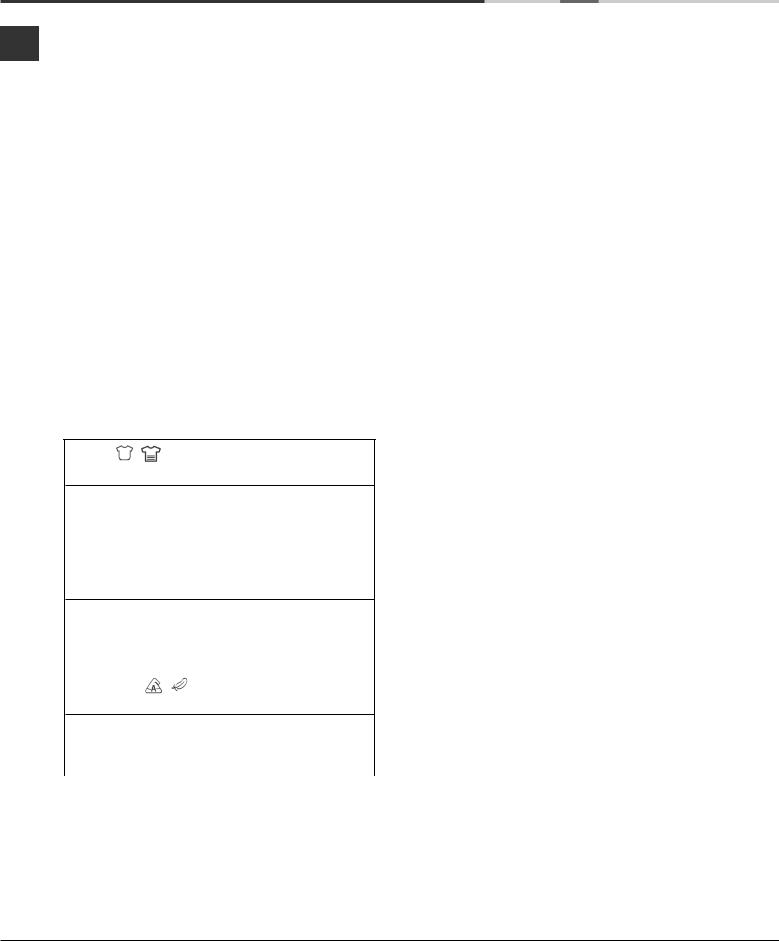
Linge
Vêtements spéciaux
F
Les Couvertures et Dessus de lits : articles en acrylique (Acilan, Courtelle, Orion, Dralon) doivent être séchés avec des précautions particulières, à BASSE température. Évitez de les sécher pendant une durée prolongée.
Vêtements plissés ou froissés : lisez les instructions de séchage du fabricant figurant sur le vêtement.
Articles amidonnés : ne séchez pas ces derniers avec des articles non amidonnés. Faites en sorte de retirer autant de solution d’amidonnage que possible de la charge avant de placer celle-ci dans le sèchelinge. Ne séchez pas de façon excessive : l’amidon pourrait devenir poudreux et laisser vos vêtements sans tenue, ce qui irait à l’encontre du but recherché.
Temps de séchage
Le tableau ci-dessous présente les temps de séchage APPROXIMATIFS en minutes. Les poids font référence aux vêtements secs :
Cotons
Température Élevée (normale) 
Temps de séchage après 800-1000trs/mn dans la machine à laver
1kg |
2kg |
3kg |
4kg |
5kg |
6kg |
7kg |
20-30 |
35-45 |
45-60 |
60-70 |
70-80 |
80-100 |
90-120 |
|
|
|
|
|
|
|
Synthétiques 
Température Élevée (normale) 
Temps de séchage après essorage réduit dans la machine à laver
1kg |
|
2kg |
3kg |
|
|
|
|
20-30 |
|
35-45 |
45-60 |
|
|
|
|
Acryliques |
/ |
|
|
Basse température (température douce) 
Temps de séchage après essorage réduit dans la machine à laver
|
1kg |
2kg |
|
|
|
25-40 |
40-60 |
|
|
|
|
Ces temps sont approximatifs et peuvent varier en fonction des paramètres suivants :
•La quantité d’eau retenue dans les vêtements après le cycle d’essorage : les serviettes éponge et les textiles délicats retiennent une quantité importante d’eau.
•Les textiles : des articles qui sont constitué par le même type de textile mais qui ont des textures et des épaisseurs différentes peuvent ne pas avoir le même temps de séchage.
•La quantité de linge : les articles uniques ou les petites charges peuvent prendre plus longtemps à sécher.
•La sécheresse : Si vous avez l’intention de repasser certains de vos vêtements, vous pouvez les sortir de la machine alors qu’ils sont encore un peu humides. Les autres vêtements peuvent y rester plus longtemps si vous voulez qu’ils en sortent entièrement secs.
•Le réglage de la température.
•La température ambiante : si la pièce dans laquelle le sèche-linge est installé est froide, cela prendra plus longtemps à l’appareil pour sécher vos vêtements.
•Le volume : certains articles volumineux peuvent être séchés en machine avec quelques précautions. Nous vous suggérons de retirer plusieurs fois ces articles de la machine, de les secouer et de les remettre dans le sèche-linge jusqu’à ce que celui-ci ait terminé de les sécher.
! Ne séchez pas excessivement vos vêtements. Tous les issus contiennent une certaine quantité
d’humidité naturelle, ce qui les rend doux et gonflants.
20
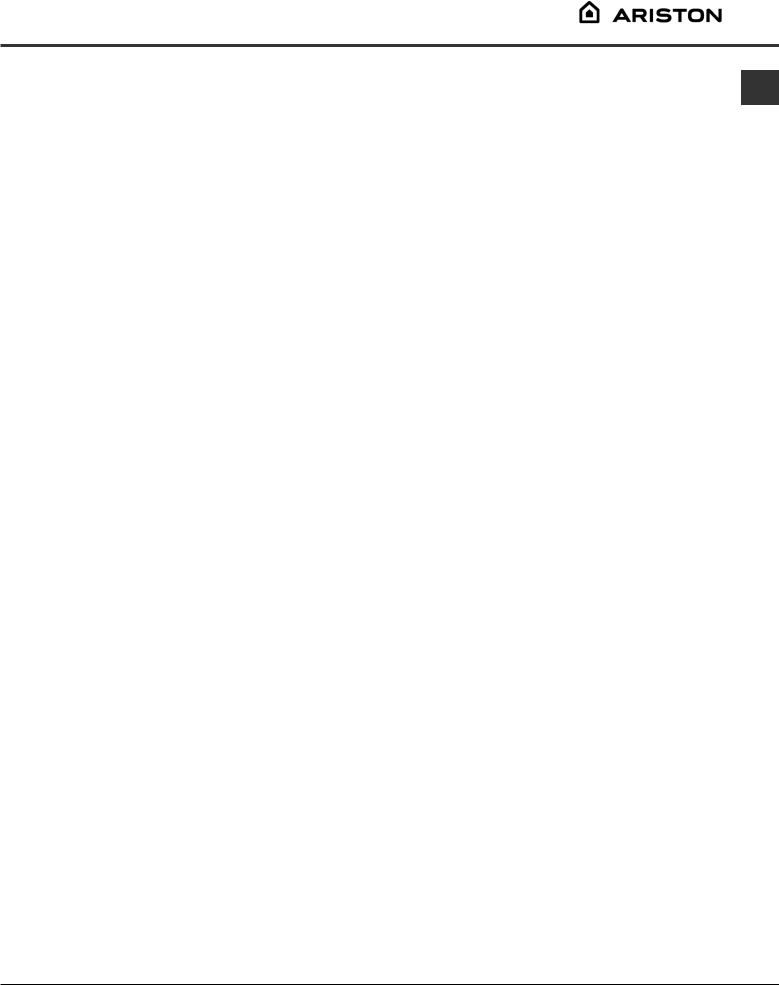
Avertissements et Suggestions
! Cet appareil a été conçu et construit conformément à des normes de sécurité internationales.
Ces avertissements sont donnés pour des raisons de sécurité et doivent être suivis attentivement.
Sécurité Générale
●Ce sèche-linge n’est pas destiné à être utilisé par des personnes (notamment des enfants) présentant des capacités physiques, motrices ou mentales réduites, ou manquant d’expérience et de connaissances, sans la surveillance d'une personne responsable de leur sécurité ou sans instructions concernant l’utilisation de l’appareil.
●Ce sèche-linge a été conçu pour un usage domestique, et non professionnel.
●Ne touchez pas cet appareil lorsque vous êtes pieds nus ou avec des mains ou des pieds humides.
●Débranchez cette machine en tirant sur la fiche et non sur le cordon.
●Les enfants ne doivent pas se trouver à proximité du sèche-linge lorsque celui-ci est en marche.
Après avoir utilisé ce sèche-linge, éteignez-le et débranchez-le. Tenez la porte fermée pour assurer que les enfants ne jouent pas avec.
●Surveillez les enfants de façon à ne pas les laisser jouer avec le sèche-linge.
●Cet appareil doit être installé correctement et avoir une ventilation convenable. Les orifices d’entrée d’air à l’arrière de la machine, les orifices de sortie et le tuyau de ventilation ne doivent jamais être obstrués (voir Installation).
●Ne dirigez jamais l’orifice de sortie du tuyau de ventilation vers l’arrivée d’air à l’arrière de la machine.
●Ne laissez jamais le sèche-linge recycler de l’air d’évacuation.
●N’utilisez jamais le sèche-linge sur de la moquette où la hauteur des poils empêcherait l’air d’entrer dans la sèche-linge à partir de la base.
●Vérifiez que le sèche-linge est bien vide avant de le charger.
●L’arrière du sèche-linge peut devenir très chaud. Ne le touchez jamais en cours d’utilisation.
●N’utilisez le sèche-linge que si le filtre est solidement en place (voir Entretien).
●Ne surchargez pas le sèche-linge (voir Linge) pour les charges maximales.
●Ne chargez pas d’articles qui dégouttent d’eau.
●Vérifiez avec soin toutes les instructions sur les étiquettes des vêtements (voir Linge).
●Ne séchez pas d’articles de grande taille, très volumineux.
●Ne séchez pas de fibres acryliques à hautes températures.
●Terminez chaque programme avec sa Phase de Refroidissement.
●N’éteignez pas le sèche-linge s’il contient encore des articles chauds.
●Nettoyez le filtre après chaque utilisation (voir Entretien).
●Ne laissez pas s’accumuler de peluches autour du sèche-linge.
●Ne montez jamais sur le sèche-linge. Cela pourrait l’endommager.
●Respectez toujours les normes et exigences électriques (voir Installation).
●Achetez toujours des pièces de rechange et accessoires d’origine (voir Service Après-vente).
Vous devez observer les consigne suivantes pour réduire |
F |
tout risque d'incendie dans votre sèche-linge : |
●Ne séchez que des articles qui ont été lavés avec de l’eau et un détergent, rincés et essorés. Le fait de sécher des articles qui N’ONT PAS été lavés avec de l’eau constitue un danger d’incendie.
●Ne séchez pas des vêtements qui ont été traités avec des produits chimiques.
●Ne placez pas d'articles tachés ou imbibés d'huile végétale or de cuisson, ils risqueraient de provoquer un incendie. Les articles contenant de l'huile peuvent prendre feu spontanément, particulièrement lorsqu'ils sont exposés à des sources de chaleur comme un sèche-linge. En chauffant, les articles provoquent une réaction d'oxydation avec l'huile générant alors de la chaleur. Si la chaleur ainsi générée ne peut pas être évacuée, les articles peuvent devenir suffisamment chauds pour prendre feu. Le fait d'empiler, de superposer ou de stocker des articles contenant de l'huile peut empêcher la chaleur d'être évacuée et donc provoquer un incendie.
Si vous ne pouvez pas faire autrement que de placer des articles contenant de l'huile végétale ou de l'huile de cuisson ou ayant été en contact avec des produits coiffants dans le sèche-linge, il convient de les laver au préalable à l'aide d'une dose supplémentaire de détergent. Cette précaution minimise, sans toutefois l'éliminer, le risque d'incendie. La phase de séchage à froid doit être utilisée pour diminuer la température des articles. Les articles ne doivent pas être retirés du sèche-linge et empilés ou superposés lorsqu'ils sont chauds.
●Ne placez pas d'articles ayant été préalablement nettoyés ou lavés, imbibés ou tachés avec du pétrole/de l'essence, des solvants de nettoyage à sec ou d'autres substances inflammables ou explosives. Les substances hautement inflammables couramment utilisées dans l'environnement domestique sont notamment l'huile de cuisson, l'acétone, l'alcool dénaturé, la kérosène, les détachants, la térébenthine, les cires et les produits permettant d'éliminer la cire. Assurez-vous que ces articles ont été lavés à l'eau chaude à l'aide d'une dose supplémentaire de détergent avant de les mettre à sécher dans le sèche-linge.
●Ne placez pas d'articles contenant du caoutchouc mousse (également connu sous l'appellation mousse de latex) ou des matériaux similaires renfermant du caoutchouc dans le sèche-linge. Les matériaux contenant du caoutchouc mousse peuvent, lorsqu'ils sont chauffés, s'enflammer par combustion spontanée.
●Les produits assouplissants ou les produits similaires ne doivent pas être utilisés dans un sèche-linge en vue d'éliminer les effets de l'électricité statique sauf si leur emploi est spécifiquement recommandé par le fabricant du produit assouplissant.
●Ne placez pas de sous-vêtements contenant des renforts en métal comme les soutiens-gorge à armature dans le sèche-linge. Si les renforts en métal venaient à se détacher pendant le séchage, ils pourraient endommager le sèchelinge.
●Ne placez pas d'articles en caoutchouc ou en plastique dans le sèche-linge, comme des bonnets de douche ou des couvertures étanches pour bébé, des articles en polyéthylène ou en papier.
●Ne placez pas d'articles contenant des pièces de caoutchouc plaquées, des vêtements présentant des pièces en mousse de caoutchouc, des oreillers, des bottes en caoutchouc et des tennis recouvertes de caoutchouc dans le sèche-linge.
●Videz les poches de tous les objets qu’elles contiennent, notamment les briquets (risque d’explosion).
! AVERTISSEMENT : N’arrêtez pas le sèche-linge avant la fin du cycle de séchage si vous n’avez pas la possibilité de retirer rapidement tous les articles et de les étendre pour évacuer la chaleur.
Économiser de l’énergie et respecter l’environnement
●Essorez les articles pour éliminer l’eau en excès avant de les passer au sèche-linge (si vous utilisez une machine à laver, sélectionnez un cycle d’essorage à grande vitesse). Ceci vous permettra d’économiser du temps et de l’énergie durant le séchage.
●Séchez toujours des charges complètes – vous économiserez de l’énergie : les articles uniques ou les petites charges prennent plus longtemps à sécher.
●Nettoyez le filtre après chaque utilisation pour limiter les coûts de consommation d’énergie (voir Entretien).
21
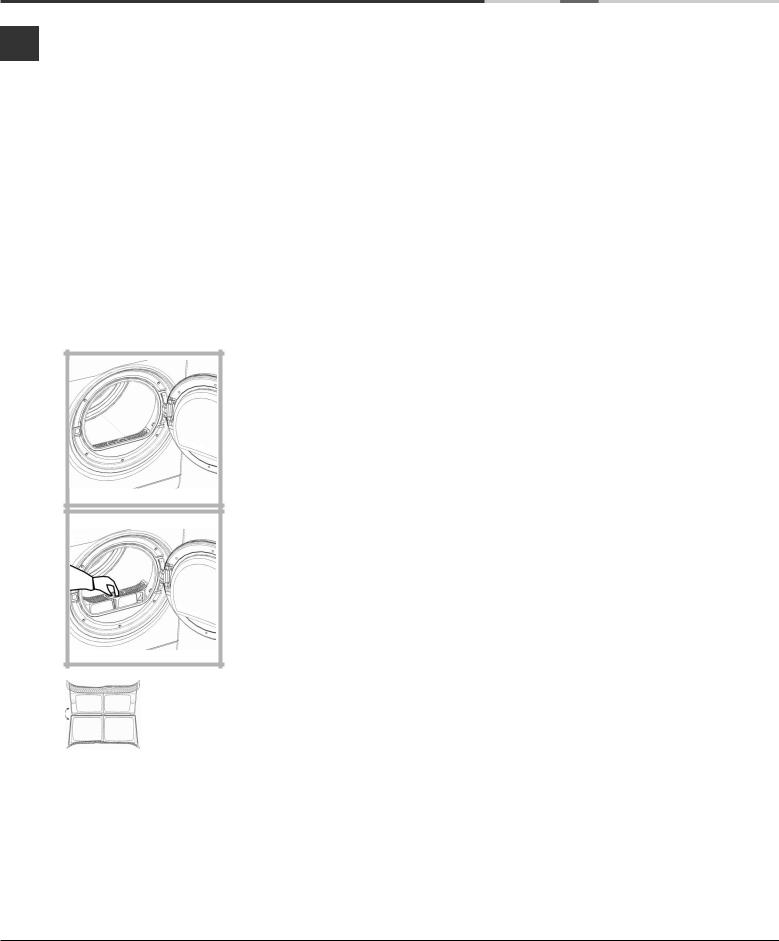
Entretien et Nettoyage
Éteignez l’électricité
F
Débranchez votre sèche-linge lorsque vous ne l’utilisez pas, lorsque vous le nettoyez et durant toutes les opérations d’entretien.
Nettoyez le filtre après chaque cycle
Le filtre est une pièce importante de votre sèche-linge: il accumule des peluches qui se forment durant le séchage. Des petits objets peuvent aussi être piégés dans le filtre. Par conséquent, une fois le séchage terminé, nettoyez le filtre en le rinçant sous l’eau courante ou avec votre aspirateur. Si le filtre devient bloqué, le flux d’air à l’intérieur du sèche-linge est sérieusement compromis : les temps de séchage sont allongés et vous consommez davantage d’énergie. Cela peut aussi endommager votre sèchelinge.
Le filtre se trouve devant la garniture du sèchelinge (voir le diagramme).
Pour retirer le filtre : 1. Tirez la poignée en
plastique du filtre vers le haut (voir le diagramme).
2.Ouvrez le filtre et nettoyez les peluches qui se seraient déposées au fond.
3.Repositionnez-le correctement. Assurez-vous que le filtre soit bien inséré à fond dans la garniture du sèche-linge.
4.Retirez toutes les peluches qui se sont accumulées sur l'intérieur de la porte et autour du joint de la porte.
! N’utilisez pas le sèche-linge sans avoir remis le filtre en place.
Vérifiez le tambour après chaque cycle
Tournez le tambour à la main afin de retirer les petits articles (mouchoirs) qui pourraient y avoir été oubliés.
Nettoyage du tambour
! Pour nettoyer le tambour, ne pas utiliser d’abrasifs, de laine d’acier ni de produits de nettoyage pour acier inoxydable.
Un film coloré peut parfois apparaître à la surface du tambour en acier inoxydable. Il peut être dû à une combinaison de l’eau et/ou des produits de nettoyage (ex. adoucissant textile provenant du lavage). Ce film coloré n’affecte pas la performance du sèche-linge.
Nettoyage
●Les parties externes en métal ou en plastique et les pièces en caoutchouc peuvent être nettoyées avec un chiffon humide.
●Vérifiez périodiquement le tuyau de ventilation et tout élément permanent de ventilation afin de vous assurer qu’il n’y a pas eu d’accumulation de peluches, et retirez-celles-ci.
●Retirez les peluches qui s’accumulent autour du filtre et des orifices de sortie.
!N’utilisez pas de solvants ou d’abrasifs.
!Votre sèche-linge utilise des roulements spéciaux qui n’ont pas besoin d’être lubrifiés.
!Faites vérifier régulièrement votre sèche-linge par des techniciens agréés pour assurer une sécurité électrique et mécanique (voir Service d’Entretien).
22
